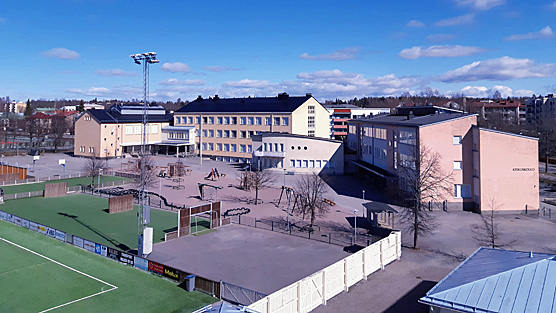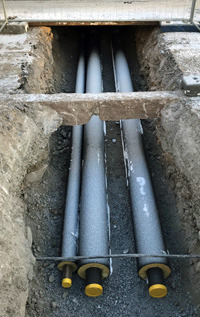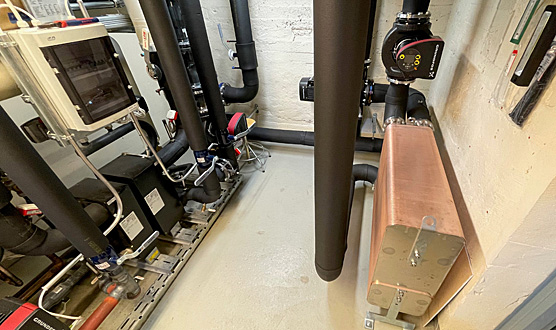
Porvoo Keskuskoulu © The City of Porvoo
The City of Porvoo implemented an innovative energy saving project at Porvoo Keskuskoulu (Porvoo Central School) as part of the Canemure subproject. A so-called two-way district heating system was introduced in September 2021 at Keskuskoulu, a school of 450 students. The building's heating utilises waste heat, which is generated elsewhere in the district heating network.
Harnessing waste heat for heating

District heating three-pipe solution © Iotoi Oy
In practice, the process is implemented with a new patented district heating three-pipe solution, which enables the utilisation of low-temperature returning district heat for heating the building. This also enables the utilisation of waste heat.
“Most of the installations have been made and the automation has been tested in practice. The results for the autumn 2021 heating season look promising,” says Project Manager Matti Lehtovaara from the City of Porvoo. According to monitoring, the consumption of electricity and district heat in Porvoo Keskuskoulu has decreased by around 40 per cent in September–December 2021.
Typically, the district heating company feeds 80–120 degrees Celsius water to the district heating network, which returns when it has circulated to heat the properties.
“We use the cooler 40–50 degrees Celsius district heating returning water to heat the school. In practice, waste heat is produced a few kilometres away from the industrial area where it is generated in a process. This heat is returned to the district heating network and utilised in school heating. Already in the autumn of 2021, we used about 90% of low-temperature district heat returning water and also a little bit of high-heat district heat,” Lehtovaara says. “In the future, it will be possible to increase the share of waste heat in heating.”
Intelligent automation system controls heating and ventilation
Porvoo Keskuskoulu has also introduced a new kind of intelligent automation in ventilation control.
The sensors placed in the school premises measure outdoor and indoor temperature, air carbon dioxide concentration and heat produced by humans, and adjust the heating and ventilation intensity accordingly, keeping the indoor conditions constant. Automation can reduce heat and electricity consumption when the ventilation is operating with the amount of power needed.
“We have a service agreement with Porvoon Energia that covers both the investments made and the maintenance and servicing during the contract period,” Lehtovaara says. “The intention is to work with this concept for the entire term of the contract, that is, 10 years.”
The energy system benefits both users and the service provider
The system provides students and teachers with a more even temperature. “The focus of the project is on users. During the heating season, we aim for a temperature of 21 degrees as before,” Lehtovaara says.
The energy company will also benefit, as its production will become more efficient as the water returning to the production plant will be cooler. For its part, the project also gives the company more room to react, as the new system will not require so much reserve power, for example, in freezing temperatures. If the concept is extended to other destinations in addition to Keskuskoulu, the forecasting of energy production will improve further. “We have already tentatively identified other suitable destinations,” Lehtovaara says.
“At the heart of this solution is the consideration of both the heat producer and the heat consumer,” says Johnny Holmström, CEO of the project contractor IOTOI OY. “When both parties benefit, we can create a more sustainable city and energy system together.”

Central school's heat distribution room © Iotoi Oy
Making energy consumption and production visible to residents
The Porvoo Canemure subproject also aims to involve residents and make energy consumption visible.
“Our goal is to get the energy consumption and production of the city's key properties into a property system, from which it can be visualised, for example, on the city's website. In this way, for example, schools can introduce a screen that people can use to monitor their own school's energy consumption and solar panel output,” Lehtovaara says.
Learn more
Further information
- project manager Matti Lehtovaara, City of Porvoo, firstname.lastname@porvoo.fi, tel. +358 (0)40 676 1377